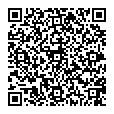The EEA report 'Water resources across Europe – confronting water scarcity and drought' highlights that while southern Europe continues to experience the greatest water scarcity problems, water stress is growing in parts of the north too. Moreover, climate change will cause the severity and frequency of droughts to increase in the future, exacerbating water stress, especially during the summer months.
Excluding illegal water use, Europe abstracts around 285 km3 of freshwater annually, representing on average 530 m3 per capita.
"We are living beyond our means when it comes to water. The short-term solution to water scarcity has been to extract ever greater amounts of water from our surface and groundwater assets. Overexploitation is not sustainable. It has a heavy impact on the quality and quantity of the remaining water as well as the ecosystems which depend on it," said Professor Jacqueline McGlade, Executive Director of EEA. "We have to cut demand, minimise the amount of water that we are extracting and increase the efficiency of its use."
Key findings and recommendations
Shifting the management focus from increasing supply to minimising demand needs to involve various different policies and practices:
- In all sectors, including agriculture, water should be priced according to the volume used.
- Governments should implement drought management plans more extensively and focus on risk rather than crisis management.
- Water-intensive bioenergy crops should be avoided in areas of water scarcity.
- A combination of crop selection and irrigation methods can substantially improve agricultural water efficiency if backed-up with farmer advisory programmes. National and EU funds including the European Union’s Common Agricultural Policy can play an important role in promoting efficient and sustainable water use in agriculture.
- Measures to raise public awareness, such as eco-labelling, eco-certification, education programmes in schools, are essential to realise sustainable water use.
- Leakage in public water supply systems must be addressed. In parts of Europe, water loss via leakage can exceed 40 % of total supplies.
- Illegal abstraction of water, often for agricultural use, is widespread in certain areas of Europe. Appropriate surveillance and a system of fines or penalties should be put in place to address the issue.
- Authorities should create incentives for greater use of alternative water supplies, such as treated wastewater, greywater, and ‘harvested’ rainwater, to help reduce water stress.
Overview of water use in Europe
In Europe as a whole, 44 % of abstraction is used for energy production, 24 % for agriculture, 21 % for public water supply and 11 % for industry. However, these figures mask significant differences in sectoral water use across the continent. In southern Europe, for example, agriculture accounts for 60 % of the total water abstracted and reaches as much as 80 % in certain areas.
Across Europe, surface waters, such as lakes and rivers, provide 81 % of the total freshwater abstracted and are the predominant water source for industry, energy and agriculture. By contrast, public water supply relies mostly on groundwater due to its generally higher quality. Almost all water used in energy production is returned to a water body, whereas most of the water abstracted for agriculture is not.
Desalination has become a fast growing alternative to conventional sources of water, particularly in water-stressed regions of Europe. Its high energy needs and the resulting brine must be taken into account, however, when assessing desalination’s overall impact on the environment.
Notes to the editor
The report is available at http://www.eea.europa.eu/publications/water-resources-across-europe
The report will be presented to the press during the 5th World Water Forum in Istanbul, Turkey: http://worldwaterforum5.org/
About the European Environment Agency (EEA)
The EEA is based in Copenhagen. The agency helps achieve significant and measurable improvement in Europe's environment by providing timely, targeted, relevant and reliable information to policy-makers and the public.
Contact information
For media inquiries:
Ms Gülçin Karadeniz, Press officer
gulcin.karadeniz at eea.europa.eu
mobile +45 23 68 36 53

Document Actions
Share with others